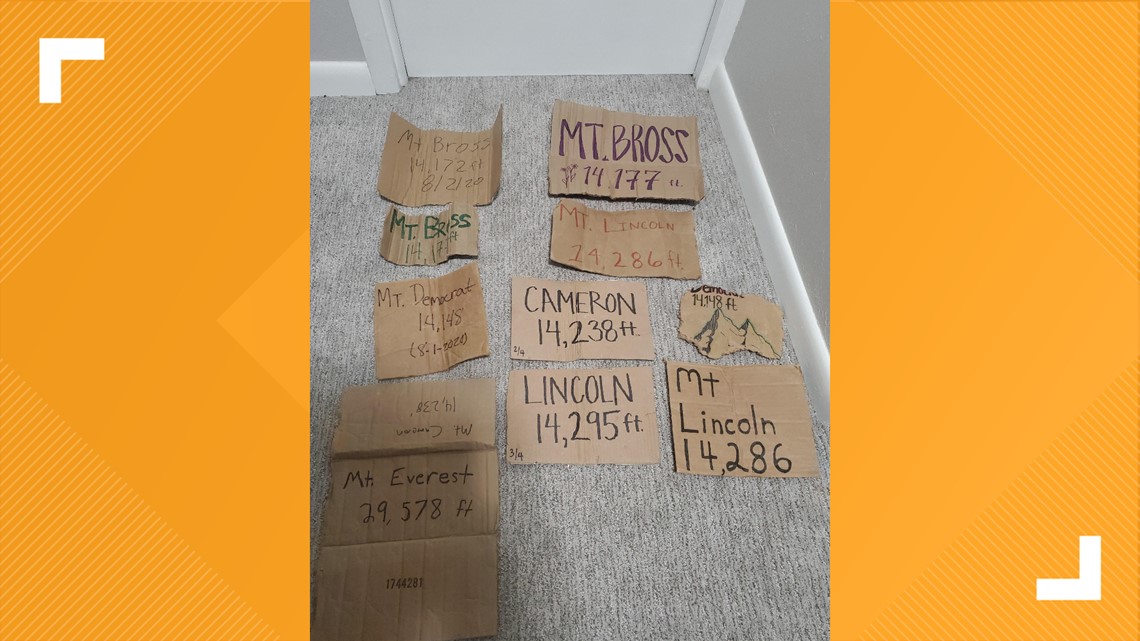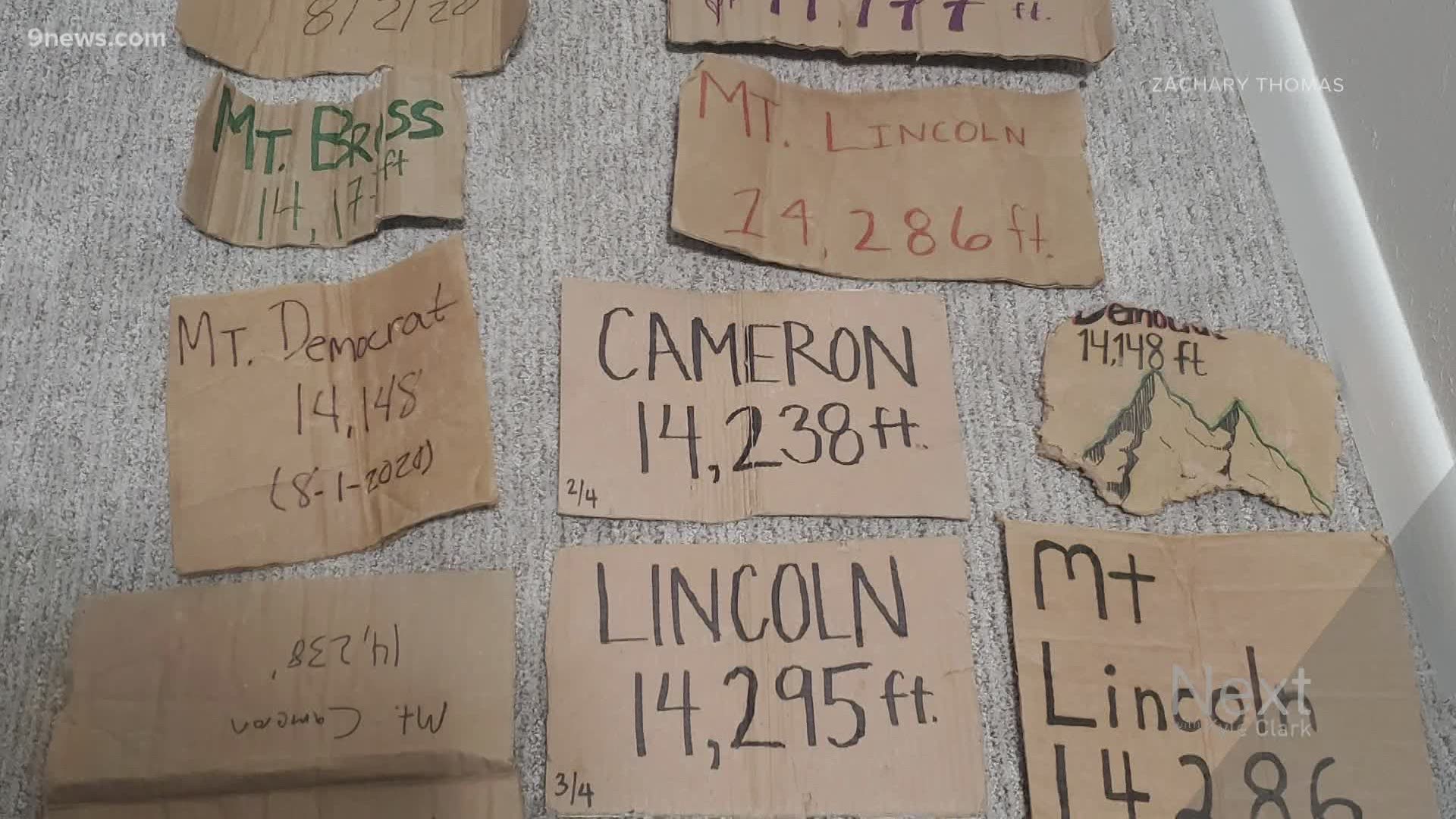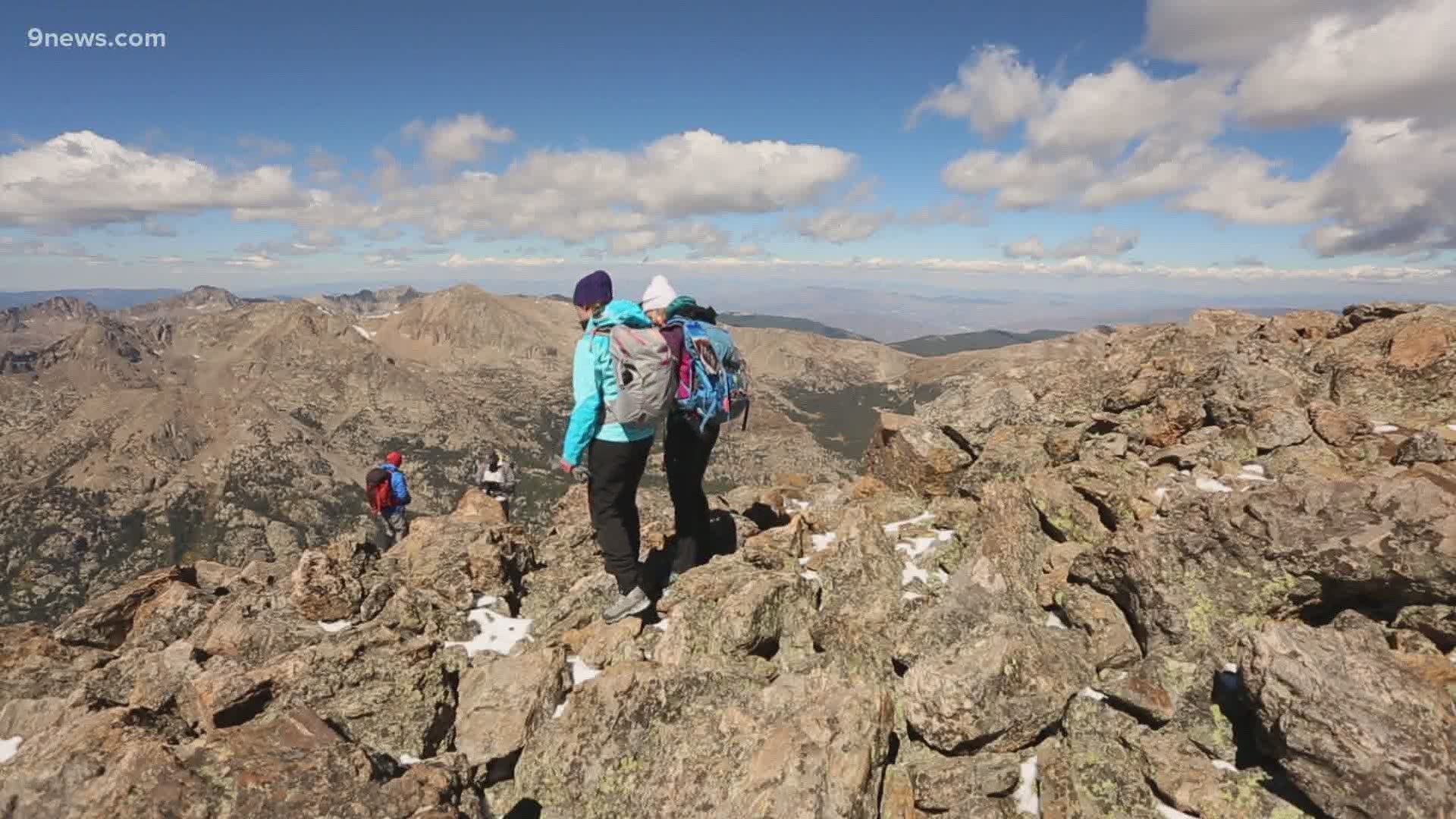MINERAL COUNTY, Colo. — By the time Zachary Thomas finished a hike on Mt. Cameron, he said he had picked up nearly a dozen of those cardboard signs that people like to hold on the summit of Colorado’s mighty 14,000’ peaks, presumably to show their social media followers that they had in fact completed the monumental task that countless had done before them.
Since Mt. Cameron is on the Decalibron route, some of the signs were for peaks like Mt. Lincoln, Mt. Democrat and Mt. Bross. There was also one dubious one for Mt. Everest, which according to Google Maps is located some 7,600 miles away, but let’s not let that distract from the bigger problem: that these pieces of cardboard were left behind at all.
“Most 14er summits seem to be littered with those signs” said Loretta McEllhiney, the Colorado 14ers Program Manager for the U.S. Forest Service. “It would be really nice if people would abide by leave no trace principles and leave nothing behind. If they can pack it up, surely they can pack it down.”
Right, right … but what if folks are just trying to be nice and leave them for the next person to summit some of the state’s most well-traveled peaks?
“When everybody’s carrying one, there’s no need to leave them behind for the next person,” McEllhiney said. “What happens is they become projectiles with the high wind, and even a piece of cardboard flying pretty fast can hurt somebody.
“You not only find them on the slopes, but by the summits, down by the trees kind of, by where they’ve flown.”


McEllhiney said she’s definitely seen more of the signs on the mountain in recent years … and she’s made a funny observation.
“I will grab all those signs and haul them off the mountain, and almost every single one will have a different elevation on them,” she said. “It’s the same peak, but different elevations.”
Of course, those cardboard signs are just of a fraction of what McEllhiney said she’s picked up on Colorado’s 14ers over the years.
One of her biggest pet peeves?
“Dog poop bags, thousands and thousands of them,” she said. “I can typically fill a bucket hiking up and down a 14er just with dog poop bags.”
She wants to emphasize that dog owners should keep their pets on a leash so they don’t bug high alpine wildlife, and that they pack out all of their pet’s waste so it doesn’t disturb the fragile ecosystem.
Packing it in and packing it out applies to all waste by the way. And yes, McEllhiney said human poop is also a big problem.
“For our crews that are out there doing work, and they’re moving big rocks around, it’s not uncommon to roll over a rock and end up with human waste on them,” she said. “If you and I walked up right now, I could show you hundreds, hundreds of piles on any mountain.”
It’s enough of a problem that McEllhiney said she’s worried about water quality. It’s also a reason why, if you’re hiking up a 14er, to bring bags with you to carry out your own waste, in addition to your dog’s.
She said even a tiny hole in the alpine tundra can destroy plants that are potentially hundreds of years old, as well as the animals that have lived in the area long before humans started posing there with cardboard signs for Instagram.
“Another thing that I find a lot of, and this is unbelievable: discarded underwear,” she said. “I think what happens is people don’t know how to dispose of their waste, and they have an accident. And they’re usually chewed up, and this cannot be good for alpine animals.
“We call them ‘poopy-panties, you just find them all over the place.’”
Maybe now it’s worth mentioning that it’s not a good move to leave dirty underwear behind anywhere, especially not in Colorado’s pristine natural environments that we want to preserve for future generations.
But here we are, and these aren’t the only egregious pieces of trash that McEllhiney said she and other land managers have had to pick up over the years.
“I have found sleds, flags, golf clubs, collapsed tents, totally abandoned camps, kites, stuffed animals, kitchen appliances …” McEllhiney said.
Wait what?
“For some reason there was somebody several years back that was carrying kitchen appliances up to the 14ers and leaving them behind,” she said. “I think people might think it’s cute or funny, but they need to understand that once they walk away from that item, it’s just trash …”
“I’ve had toasters and blenders and toaster ovens and like a coffee grinder, and just all kinds of junk.”
One time, McEllhiney said someone even left a 40-pound monument on the top of Mt. Elbert, and that she personally had to carry it down Colorado’s tallest peak.
And that’s why this all comes back to one important concept that we don’t learn in school: Leave No Trace. Those seven principals are all things that should make perfect sense: plan ahead and prepare, travel and camp on durable surfaces, dispose of waste properly, leave what you mind, minimize campfire impact, respect wildlife and be considerate of other visitors.
Two important things McEllhiney said are super important when it comes to 14ers? Stay on the trail (yes, even during the COVID-19 pandemic) and if you have to step away to give a fellow hiker some distance, do so on rocks rather than the tundra.
Also, and this is a big one, if you pack it in, pack it out. That means if you decide to carry a toaster, a monument or one of those cardboard signs up a mountain, the least you can do is the easier part, and bring it back.
“If we have more people supporting the preservation of public lands, we’re better off,” McEllhiney said.
SUGGESTED VIDEOS: Local stories from 9NEWS


